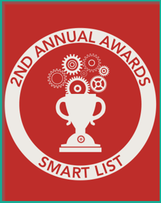The Importance of Technology in Education
The benefits of integrating technology within the classroom are numerous:
- Teachers can create individualized instruction and assessment, better tailored to their students' needs.
- Students can work at their own pace and receive one-on-one instruction through virtual lessons.
- Lessons can be more engaging, interactive, collaborative, and designed for multiple intelligences.
- Assessment results can be delivered immediately.
- Students with special needs can access modified forms of instruction and assessment.
- Advanced students can extend their learning opportunities outside of a traditional curriculum. (Gudenius 2010)
And this list grows longer every day. However, these results cannot be achieved by simply giving every child a computer. Unfortunately, "most of the schools that have integrated laptops and other digital tools into learning are not maximizing the use of those devices in ways that best make use of their potential" (Education Week, 2011). Teachers need professional development and training to understand how to best utilize technology within their content area. Additionally, integrating technology cannot be an occasional occurrence. Indeed, "schools must incorporate technology into daily teaching to realize the benefits" (Greives, et al, 2010).
However, these issues can be resolved through proper teacher training. And when teachers are comfortable and experienced with regularly integrating technology, the results can be profound and powerful (Edutopia, 2007). Students become more engaged, teachers shift their focused to more problem-based, interactive lessons, and assessments more accurately judge the quality of learning students have achieved.
Finally, it should be pointed out that in many cases, teachers must open themselves up to learning from students. It is often the younger generation who first adopts these new technologies and teachers should be open to receiving input from today's youth. Indeed, "while many adults are talking about leveraging technologies in the future, the students are already paving a path for us today" (Project Tomorrow 2011).
In conclusion, technology should not been seen as a panacea for the woes of today's classroom. However, with proper training and integration, technology can be used to greatly improve instruction, engagement, and assessment. Teachers must realize the necessity of integrating technology and continually strive to adapt and modernize their current curriculum. With the constant and rapid evolution of new technologies, the necessity for teachers to remain ahead of the curve remains one of the most important issues of the day.
References:
Education Week, (2011, September 1), "Technology in Education." Retrieved online from: http://www.edweek.org/ew/issues/technology-in-education/
Edutopia Staff, (2007, November 5), "What is successful technology integration." Retrieved online from: http://www.edutopia.org/technology-integration-guide-description
Greaves, T.; Hayes, J.; Wilson, L.; Gielniak, M.; & Peterson, R., (2010), “The Technology Factor: Nine Keys to Student Achievement and Cost-Effectiveness,” Retrieved online from: http://www.pearsonfoundation.org/downloads/ProjectRED_TheTechnolgyFactor.pdf
Gudenius, M., (2010, February 9), "Technology Integration Now: Why and How." Retrieved online from: http://www.slideshare.net/kidelectric/technology-integration-now
Project Tomorrow, (2011, April), “The New 3 E’s of Education: Enabled, Engaged, Empowered,” Retrieved online from: http://www.tomorrow.org/speakup/pdfs/SU10_3EofEducation(Students).pdf












